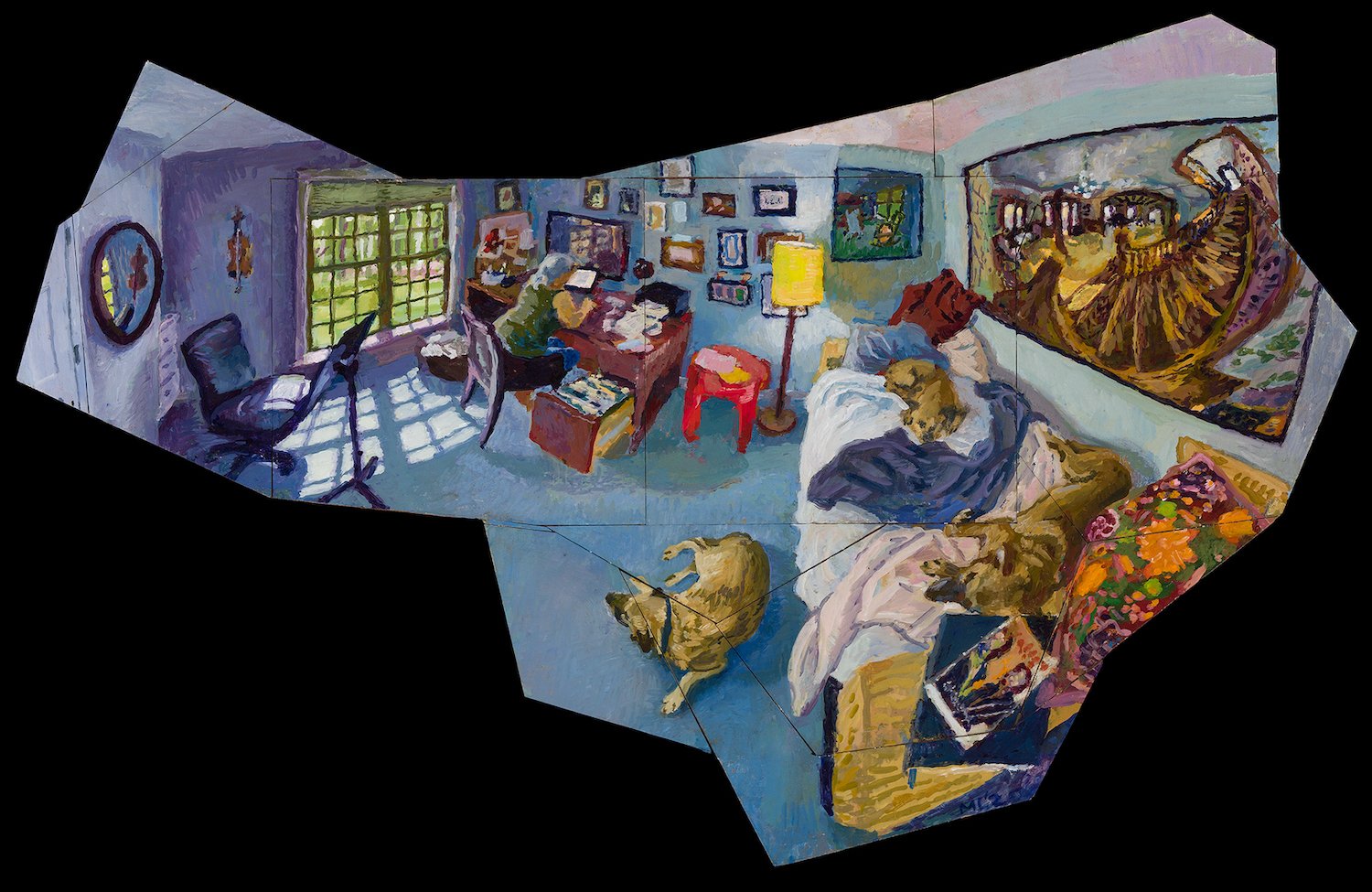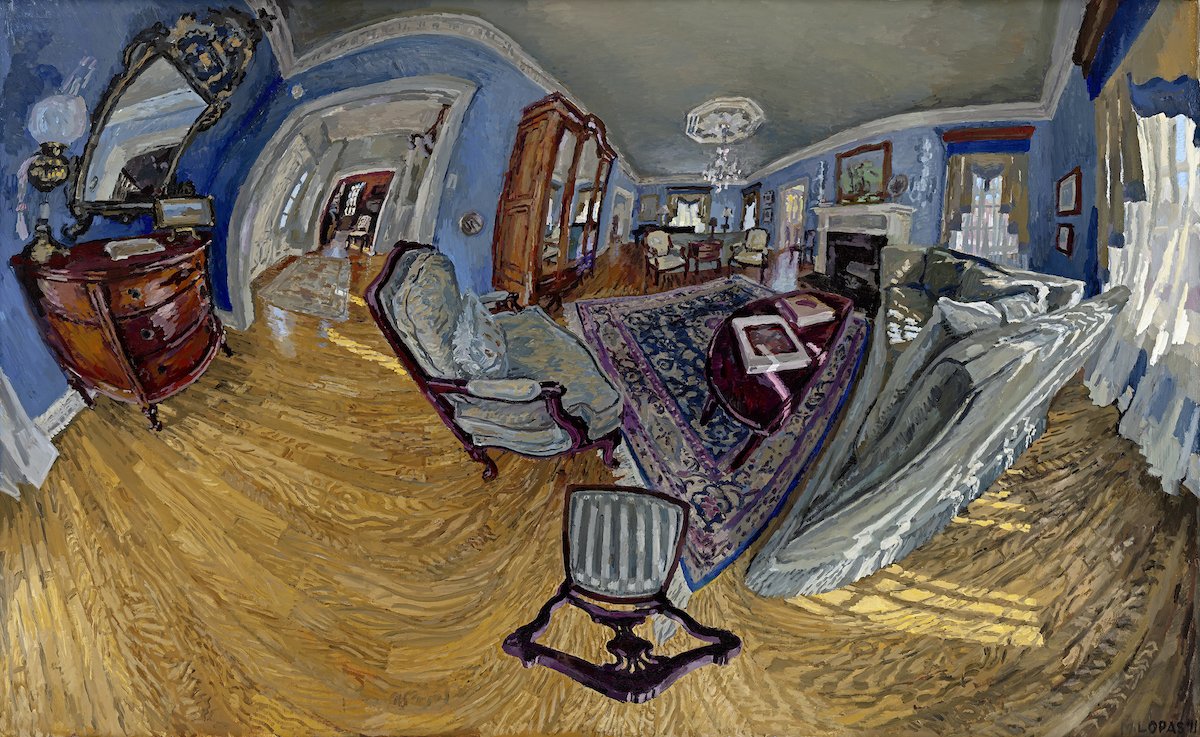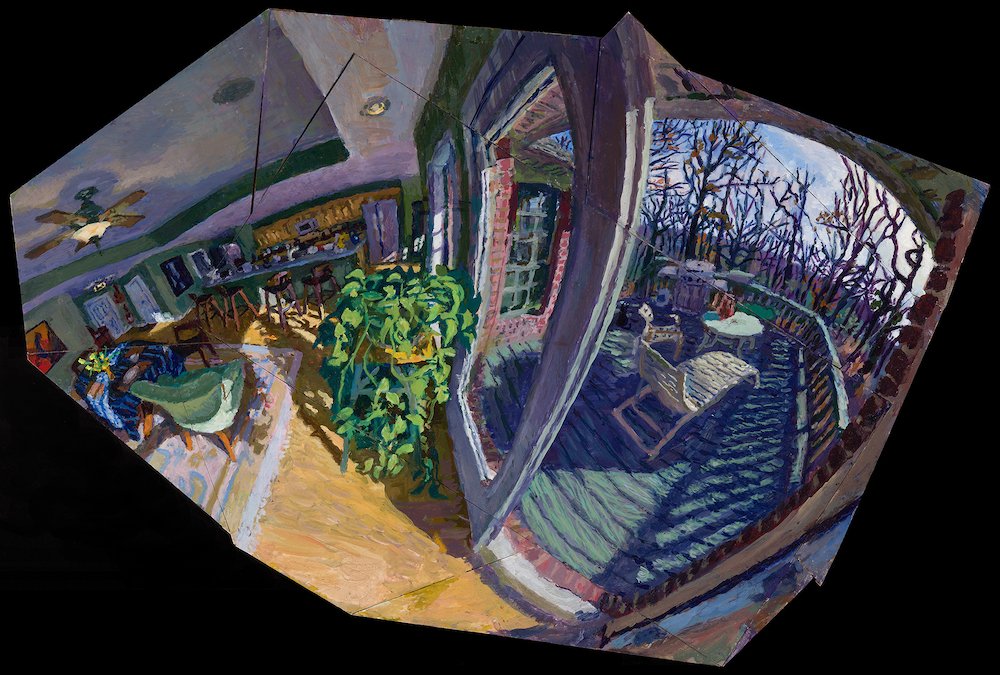Interview with artist Matthew Lopas
Matthew Lopas has been teaching art at Hendrix College for over 20 years. His art is an expression of his unique vision of the world around him and encourages the viewer to rethink the way they perceive reality. This captured vision is colorful, quirky, and always fascinating. More of Matthew’s work can be seen at Boswell Mourot Fine Art in Little Rock.
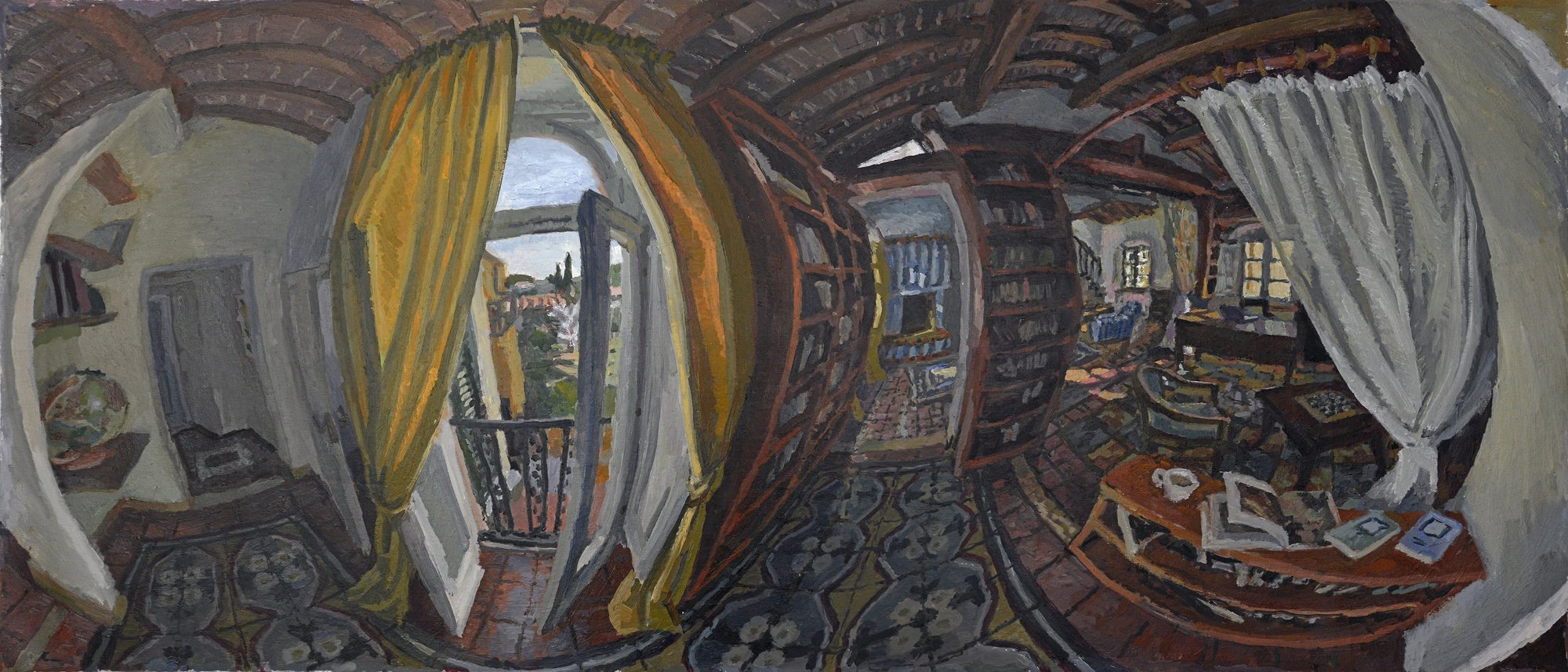
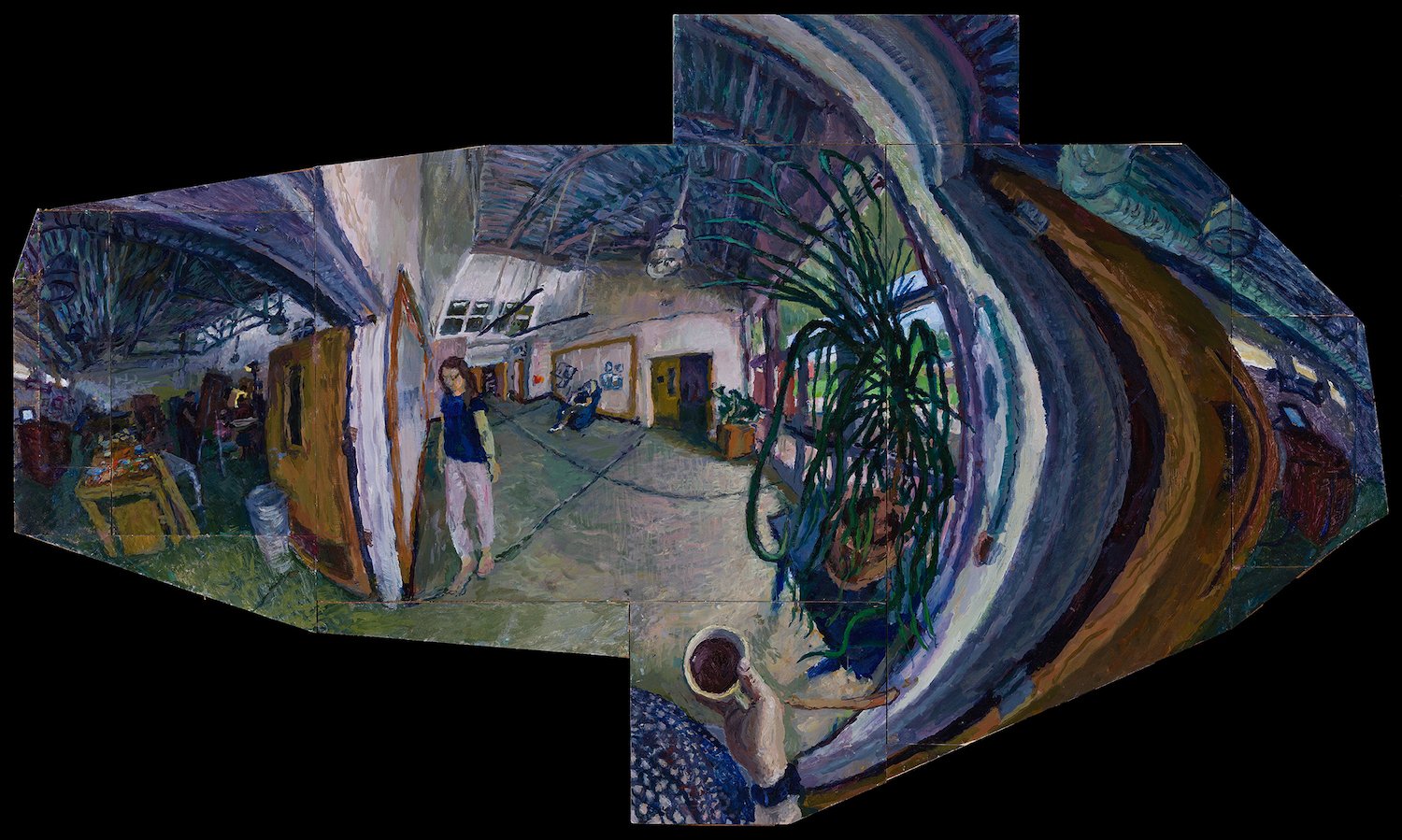
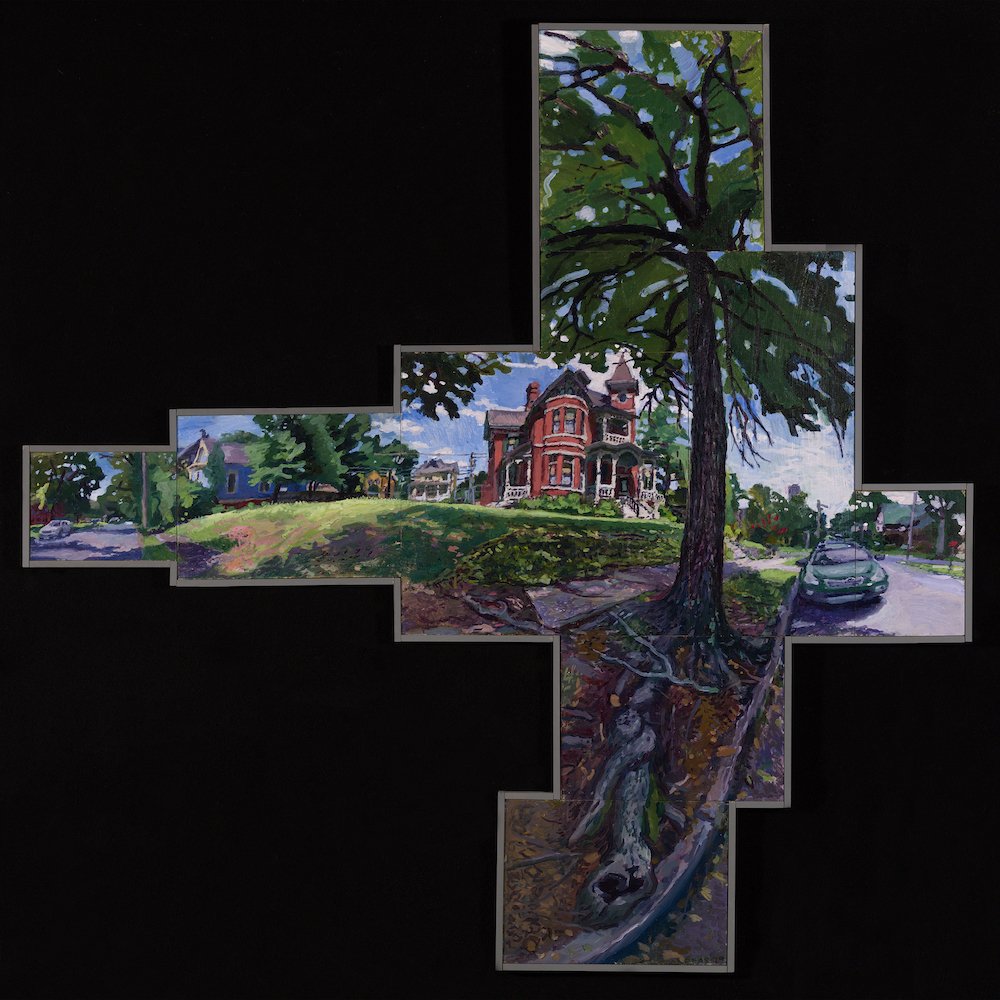
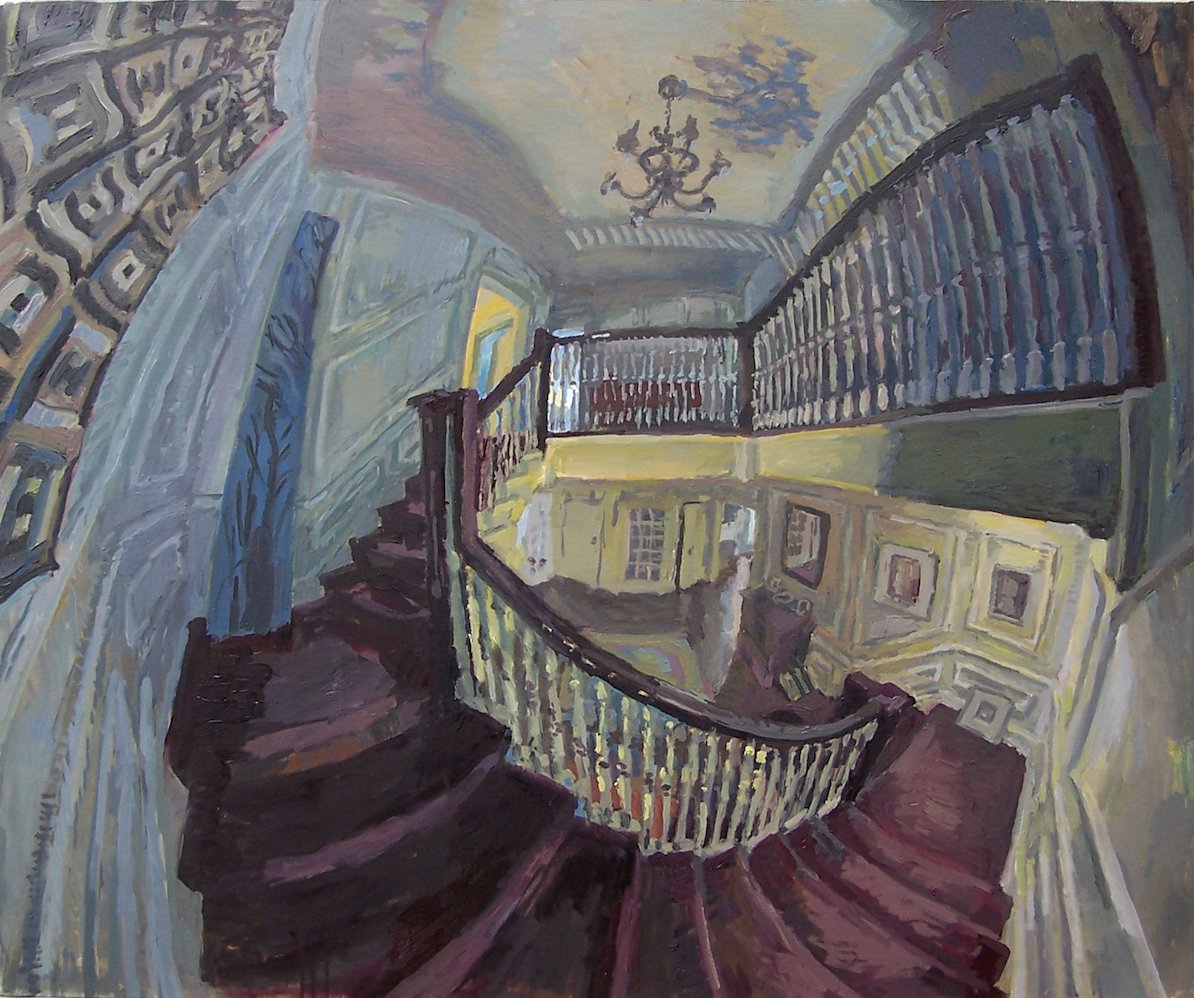
AAS: Matthew, I believe you are originally from Chicago. Tell me about yourself and what brought you to Arkansas.
ML: I was born in Hyde Park on the south side of Chicago, grew up in Evanston in a secular Jewish household that loved art and respected culture. My father and his sister were hidden children in Belgium during the war and came to Chicago in 1948 with my grandmother, who had family here. My father became a doctor and married my mother, a French teacher and amateur artist. My mother’s parents had also built up prosperity from immigrant roots. My grandfather was a dentist and he and my grandmother lived near the Art Institute. They took me to the museum as a kid.
After graduating from the University of Michigan with a BA in Chinese Studies, I completed a BFA at the Chicago Art Institute, and then continued for an MFA at Yale. After graduating from Yale, I eventually got my dream job as an Art Professor at Hendrix College in 1999. I thought that I would stay here for a few years, and move on, but Hendrix is a great place to work, and Arkansas is beautiful, so along with my wife Susan I stayed and raised a family here.
AAS: I think that it is fascinating that you learned Mandarin! I am curious what got you interested in studying Chinese culture and how that morphed into completing an MFA in Painting and Printmaking from Yale School of Art.
ML: As a kid I was really interested in exotic things. I intensively studied Tai Chi in high school, so I signed up for Mandarin to cover the University of Michigan language requirement. I had no idea what I got myself into! It was so hard! I am not naturally gifted with languages, but I had a good work ethic. I became so absorbed that Chinese Studies became my major. In 1986 I took a year in the People’s Republic of China, then came home to realize that I connected to the art that I was raised with much more than the wonderful, but always somehow remote, culture and art of China. When I signed up to take a drawing class at the Art Institute in Chicago, it was like a bomb went off in my life. I had learned a really fierce work ethic from studying Chinese but found in Painting a field that I was naturally very good at. Painting gave me an avenue to make the whole world seem fresh and exciting. I simply have not been able to stop myself from painting ever since.
AAS: You have been at Hendrix College for 20 years. What is it that you enjoy most about teaching art?
ML: Working with young people is a gift. The way they question everything is exciting. I get to talk about the subject I love and discover new answers that inspire me. Hendrix gives me total curricular freedom. So, I am constantly inventing new ways to teach painting. They support my art. What could be better?
“For me painting is like downhill skiing. You have to risk leaning into it or you will get nowhere.”
AAS: Your paintings are very much about visual perspective and altering that perspective. I am curious why and when did you first develop that approach?
ML: One day when I was in my teens I lay down on a couch with a sketchbook in my lap and my feet propped up on the armrest. I made a drawing that included my feet, the sketch book itself, and the view of the room. That was the first time I tried to break the wall of traditional Renaissance perspective. I wanted to include not just the scene but the artist viewing the scene, making the viewer and artist synonymous.
I discovered my methods of perspective simply by drawing or painting what I see. I never actually took a formal course in the subject. The funny thing about your question is you say that I am “altering” “visual perspective”. For me, nothing could be further from the truth. I am trying to bring the viewer into the painting, have them see the whole scene, not just a part, which I think is only possible by presenting as much of the surroundings as makes sense. I believe my paintings are simply accurate images of this very wide field of view. It took me years to figure that out and push aside conventional expectations of what “reality” is supposed to look like. It was an exciting and painful process.
AAS: Clinton Foot Bridge is a wonderful painting incorporating your unique and surprising perspective and effectively uses negative space and construction to accentuate the geometry of that perspective.
Clinton Foot Bridge, 57” x 48”, oil on wood
ML: When you start to understand how crazy the world actually looks with a very wide field of view, you can notice some very cool things. The big girder that starts low on the right side of the image and curves up and to the left, looks incredibly trippy from the spot where I was standing. I had to turn one hundred and eighty degrees to paint it! It’s actually straight! It does not curve at all! But if you progressively turn your head as you look at it – which is actually how you experience it when you are there– the parts closest to you are larger than the parts that move away. When you recreate that experience on a flat surface the line actually curves. That is the beauty of looking at the world as it really appears – you see how strange and wonderful everything is.
AAS: Another piece using the same approach is Front Yard. What I really like about it is its construction, which to me is more fluid, like the image itself.
Front Yard, 41” x 57”, oil on wood
ML: I love that piece because it’s my son's house. I am so proud that he is a homeowner! It was actually a later piece than the bridge painting. By the time I painted it I had abandoned all my learned attachment to rectangles. Only a camera makes an image in a rectangle, our field of view is an oval. So, I started this piece with a small central painting and added sections to it that flowed in curvilinear directions rather than according to a neat grid. The car on the lower right section was actually all the way over my right shoulder and behind me. I had to turn and stretch to paint it. The shape of the painting reflects how we move our bodies and eyes to look at the world. We don’t move like robots only in horizontal and vertical directions. Our vision scans the world in a much more organic way. So, if the shape of the painting is to be honest to the act of seeing, it’s probably not going to be a rectangle.
AAS: Zoeller House is a spectacular piece using what seems to be like multiple fisheye lens views. Do you take a lot of photographs of the spaces you will paint and how do you decide the perspective?
Zoeller House, 55” x 95”, oil on canvas
ML: I work exclusively on location from direct observation. This involves months going to places, setting up my paints, working through painting issues. I start by doing some drawings to see what I like to look at. Am I attracted to that chair? Or do I like that couch better? I follow simple desire. Then I think about how the wider space might look from a certain spot. I may see an exciting synergy between things, or a graceful flow from one element to another. So, then I pick my spot based on that. But I never “decide” on the perspective. I observe from one location and “find” the perspective. It’s this process of searching that I find so engaging.
AAS: Are many of your interiors and exteriors commission works?
ML: I have occasionally done straight commissions. I must, however, choose the aspects of their house that intrigue me. One commission I set up halfway up the stairs. This was a bit awkward for everyone trying to live in the house, but I was able to get the multiple views and levels– the door to the rooms upstairs, a bit outside through the front window, the piano in the living room and a glimpse into the kitchen— that satisfied my aesthetic. I love to paint interiors that remind me of the home I grew up in. As i mentioned earlier, my father was a war refugee and came to this country with nothing. He became a doctor and raised me in a big beautiful house in Evanston Illinois. Painting pictures of his house, and others like it, was very cathartic to me. I want to paint the life I love, and the places that I inhabit. My house. My son’s house. Sundays walking the Clinton bridge.
AAS: I have always been fascinated with M.C. Escher, so I was immediately drawn to Baker House. That must have been a lot of fun and very challenging to render.
ML: It was a blast! Staircases are so suggestive and complex. Where do they lead? Up to heaven? Down to earth? I also have always loved M.C. Escher. He mastered the rules of perspective and then played with them in his studio. He did not work much from direct observation. His insight in his staircase prints was to change what was defined as “up” and “down”. The same reorientation of my relationship to direction happened when I tried to paint the entire world from the inside of a bubble, rather than from a small section through a rectangular viewfinder. For example, in the Baker House I painted the railing that was on my left. I then continued to turn to my left to paint what I saw there. Eventually I turned all the way around and arrived at the same railing which appears again. The same thing can happen with “up” and “down”! In this painting I rotated horizontally and vertically several times. There is actually only one staircase in the room, but I painted it several times as I spun around.
Baker House, 60” x 50”, oil on canvas
AAS: Maybe my favorite piece is Arezzo Rooftop. It is dizzying and filled with the sound of wind. Masterfully done. Tell me about that piece.
Arezzo Rooftop, 43” x 64”, oil on canvas
ML: Ah Arezzo! What a wonderful place! I was incredibly lucky to take a sabbatical there and rent a place with a rooftop garden. My whole body flushes at the memory of painting that piece. You could hear the clink of dishes in the afternoon when everyone came home to cook lunch and take a nap. The clouds in the Tuscan sky somehow seem more beautiful. And, of course, you know that the Master Piero himself painted in Arezzo. You are literally working in the place where painting was birthed.
I created this painting at the moment I finally understood many things about representing the full field of view. The various systems that people have used to do it came into clear view. I decided to combine two basic systems of organizing a full 360-degree field of view into a single image, the conventional panorama and a panosphere. A simple panorama is a long image where the horizon wraps around the viewer and lines recede to a point on a vertical horizon. A panosphere represents the understanding that the horizon is really the artist's eye level. All “verticals' lines, therefore, must be of equal length from the eye of the artist at the center. Equal points radiating from the same point describe a circle. It’s a crazy piece! I mashed the two modes of representation into one image. The panorama section is on the upper left, and the panosphere section is the circle on the right. The left side establishes the conventional way of depicting the world while the right is more experiential, moving the viewer as though they were in that space. I also spun twice around in one image. Instead of painting a 360, I did a 720. That gave me the chance to paint what I love twice in one image, rather than just once. In the lower left section of the piece I smashed the panosphere and the panorama together in an intuitive and non-systematic way.

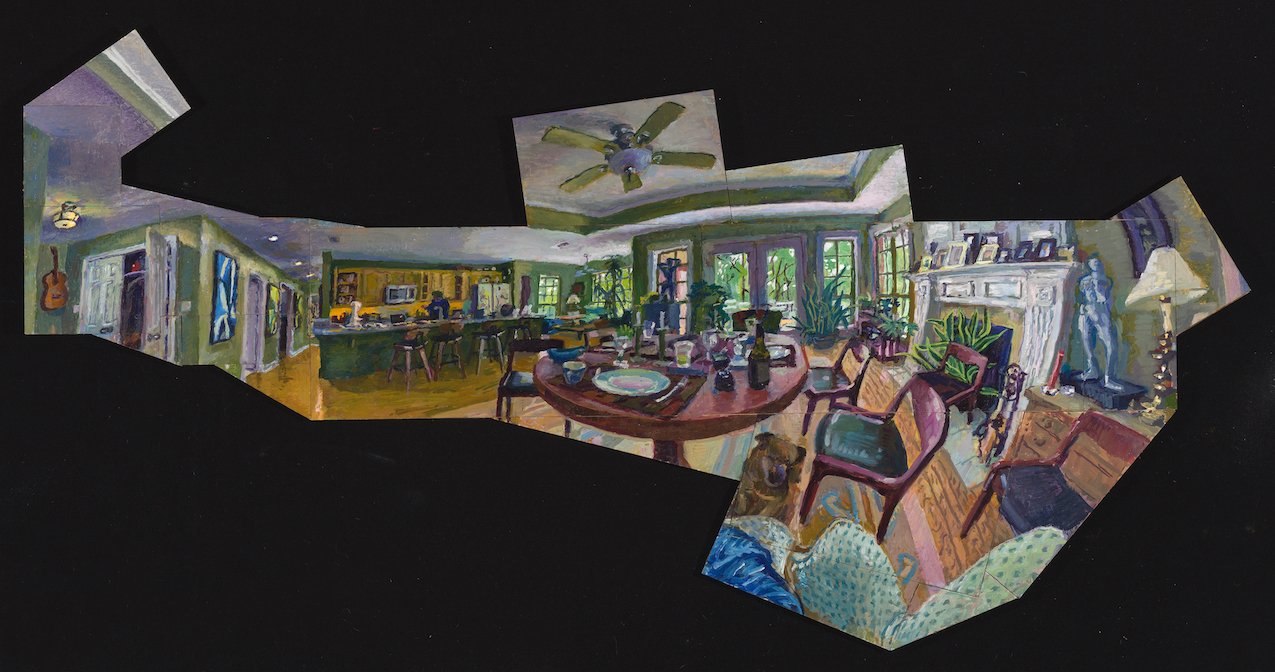
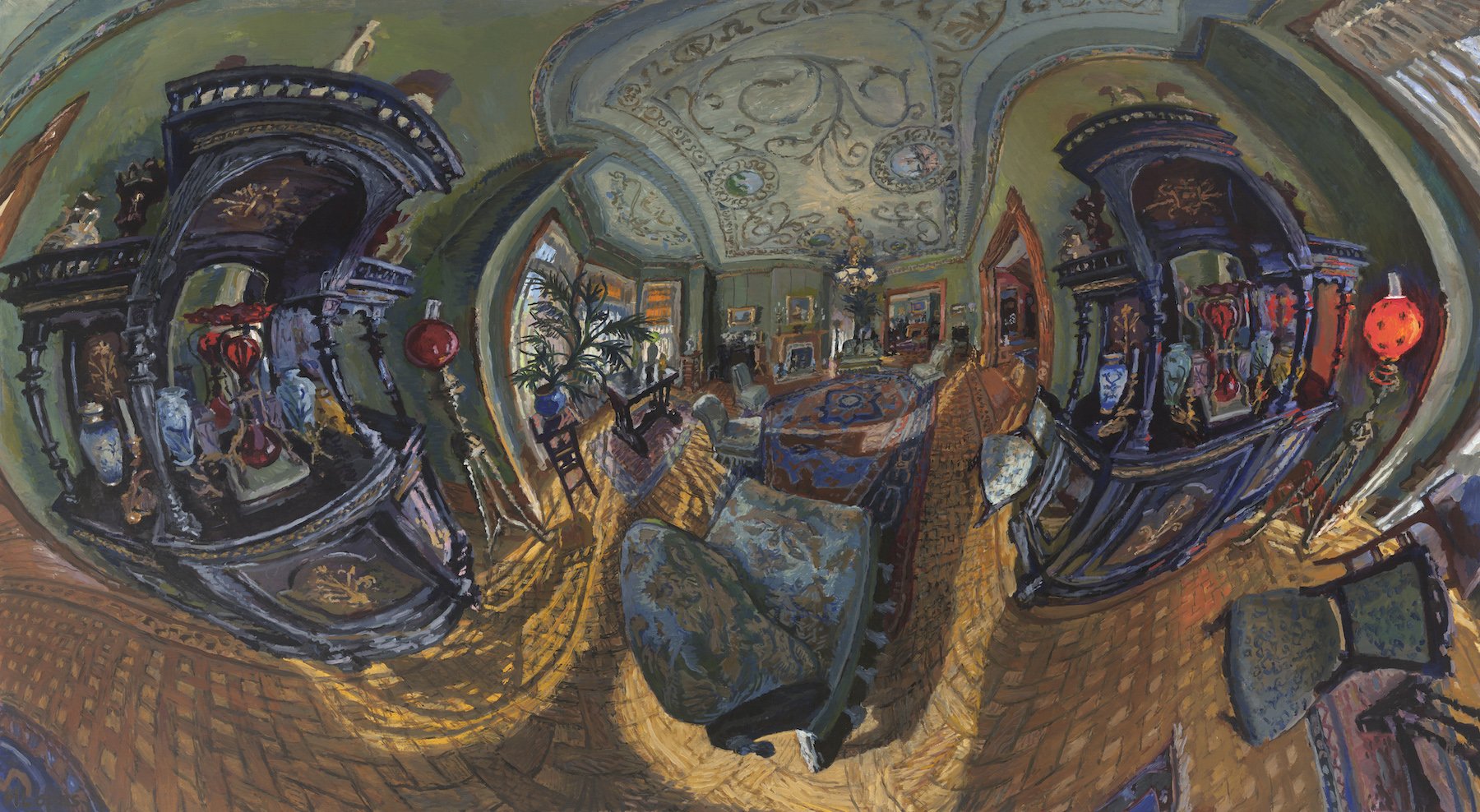
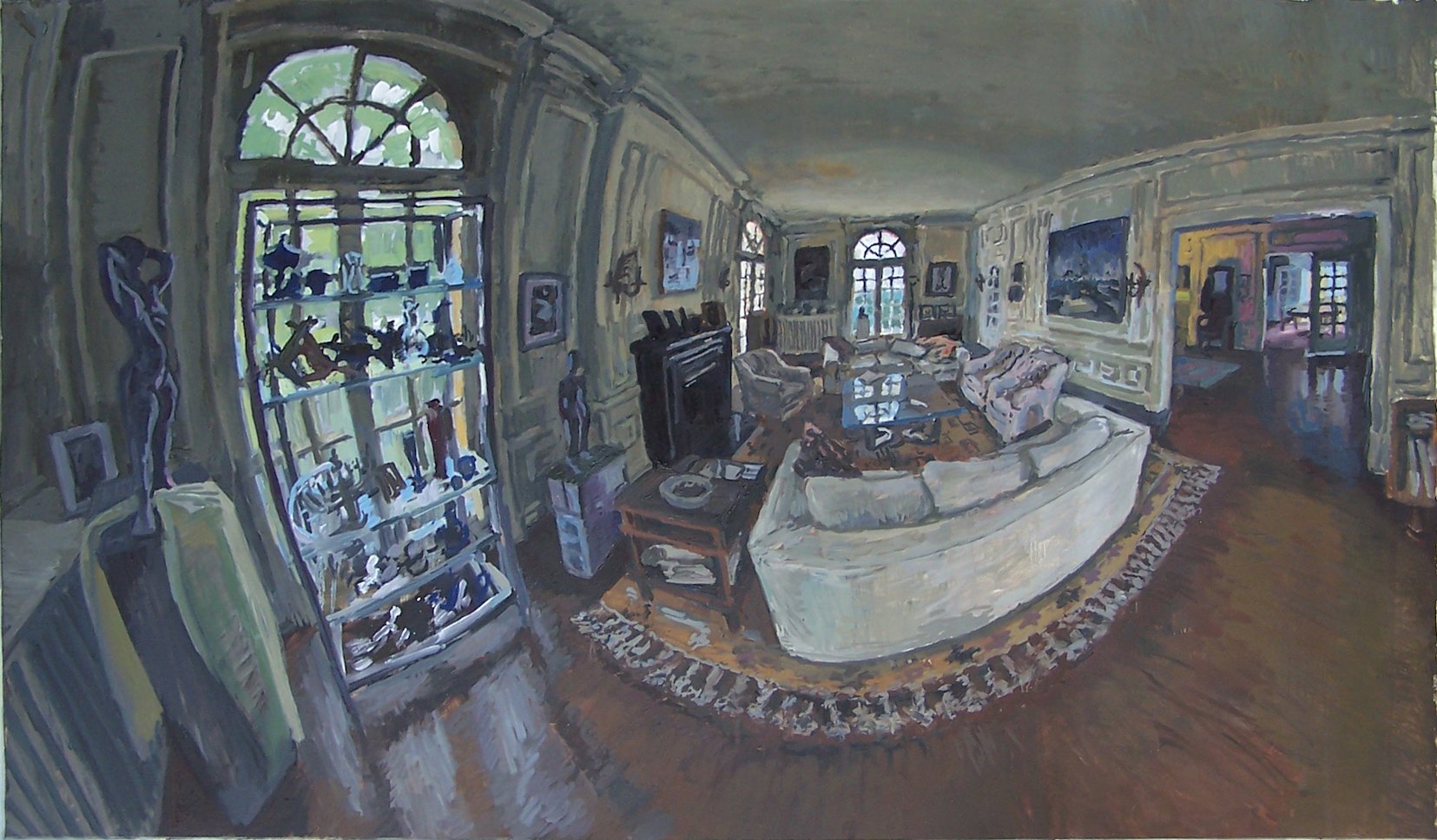
AAS: You have shown your work throughout Arkansas and around the country including NY and other parts of the Northeast. What are some of the more frequent comments you hear about your work and do different regions of the country respond differently?
ML: Recently I had the pleasure of showing at Boswell Mourot Fine Art in Little Rock with Jason McCann. I have wanted to show with Jason for some time because we are interested in many of the same things. He works with a very wide field of view as well. And Kyle Boswell is such a joy to work with. So, thanks to them both. At the recent gallery talk there, people were very interested in understanding how I “see” things and put images together. That’s pretty much true everywhere. People instantly understand that I am depicting things in a way that has an immediate impact but have a very hard time believing that what I show is in fact more “real” than conventional rectilinear images. But if we look at the world without the paradigmatic blinders of the rectilinear viewfinder, we will be shocked by its wonder.
AAS: How did you hook up with galleries in the northeast?
ML: After graduating from Yale I moved to Washington, Connecticut, the home of my future wife Susan who also studied at Yale. That area of Connecticut is truly beautiful and is a retreat for folks from New York City, so there is a lot of culture and galleries there. I walked into a nearby gallery called Paris New York Kent and introduced myself to Jacques, the dealer. He had a wonderfully thick French accent, was very charismatic, and represented some of the best artists in the area. He loved my work and gave me a show. At the opening people were spilling out of the door and my show sold out. I, of course, had no money so I was shocked and overjoyed.
“When I am on a roll with making work, figuring something out, letting the paint drip and flow, trying a new mode, and watching images come to life on their own, I am fully alive.”
I was not young, aged 30, but was a very restless person. So, the next show I completely changed my work and did not sell a thing. About a year later I formed a relationship with Timothy Tew of TEW Galleries in Atlanta. In my first show – composed of work similar to what had not been sold at Kent – five pieces were sold. Then I changed my work once again and Timothy actually asked me to go back and paint what I was doing before. He was telling me what and how to paint and I did not want to listen to him. Consequently, I chose to end a financially profitable relationship with a prominent art dealer located in a city with a thriving art market. I didn’t blame or resent him for this. I decided my independent choices as a painter were more important than pleasing Timothy or his collectors. This kind of tension and conflict between artist, dealer, and the market (brand) is inherent to the position of the artist in our society. What has happened is that branding has become such a prominent idea and strategy for success that many people don’t really understand the idea that making a work of art should be very different than making something that is simply an expensive object, like a watch, that is for sale. “Value” is generally defined in financial terms. Isn’t Art about something more than money? I learned through all this that the best places to show are places, like Boswell Mourot, that show work because they love it.
It’s true that selling work provides social legitimacy in our market driven society, and artists are essentially defined as entrepreneurs. But the truth is, if you are interested in making money, there are better ways to do that than selling paintings. For me art means something beyond the exchange of cash. I followed the example of all my professors who, although they have pieces in major museums like MOMA, still taught. Teaching gives me financial freedom to make aesthetic choices without concern for my brand within a marketplace. Throughout this experience I learned why I do what I do, and it’s not for money, or even acclaim, although that’s nice. When I am on a roll with making work, figuring something out, letting the paint drip and flow, trying a new mode, and watching images come to life on their own, I am fully alive.
AAS: Matthew, what can we expect next from you?
ML: Next fall I will do a show with Mark Lewis at a gallery called THERE in New York City. The pieces in the Boswell Mourot show were several years in the making, so I have not looked past them too much. That means the world is wide open. I do know that I am going to transition to working on metal rather than wood. Metal is very slick and therefore much more sensitive to the brush. I have been playing with it a bit. It requires relearning how to apply paint. That’s a little scary, but I love to paint on the edge of what I know and can do. For me painting is like downhill skiing. You have to risk leaning into it or you will get nowhere.
